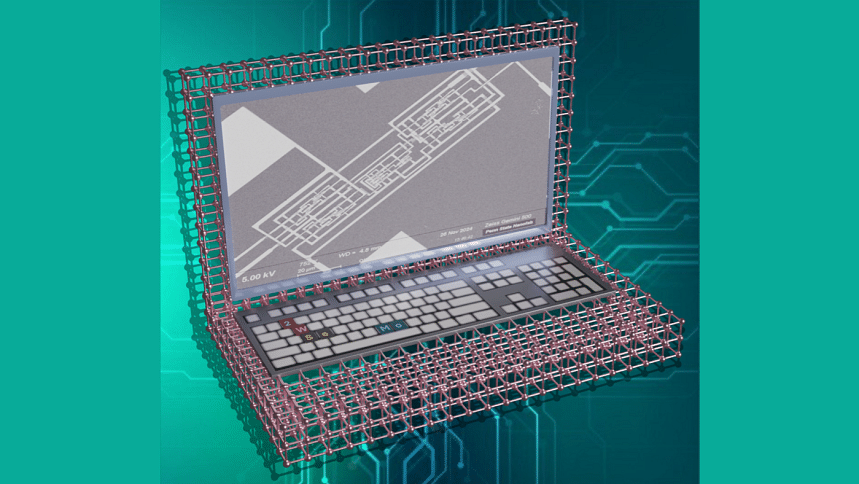Scientists build a fully 2D, non-silicon computer

A team of researchers at Penn State University have created a working computer using ultra-thin, two-dimensional materials instead of silicon, potentially paving the way for thinner, faster, and more energy-efficient electronics.
The breakthrough, published recently in the scientific journal Nature, demonstrates that the reign of silicon—the material behind nearly all modern electronics—might one day face a challenger.
The team built what's called a complementary metal-oxide semiconductor (CMOS) computer—the same basic technology inside smartphones, laptops, and other devices but constructed entirely from atom-thin 2D materials. Unlike silicon, which struggles when scaled down to near-atomic sizes, these ultra-thin materials retain their electrical properties even at such extreme thinness.
To make the computer, the researchers used two different 2D materials: molybdenum disulfide for one type of transistor and tungsten diselenide for another. Combining these, they built over 1,000 transistors and assembled them into simple logic circuits capable of performing basic computing tasks at low power.
"Silicon has powered electronics for decades, but as devices shrink further, its performance degrades," said lead researcher Saptarshi Das, a professor at Penn State, in a press release by the university. "2D materials, on the other hand, work perfectly even at atomic scales—this could be the future."
The prototype computer operates at a modest speed of 25 kilohertz, far slower than modern silicon chips, but it proves the concept works. The researchers also developed a computational model suggesting that, with further refinement, 2D-material computers could eventually compete with silicon.
"There remains scope for further optimisation," said Subir Ghosh, the study's lead author and a student of Das, "but this work marks a significant milestone in harnessing 2D materials to advance the field of electronics."
Silicon has dominated computing for nearly 80 years, while research into 2D materials only began around 2010. The team acknowledges that perfecting this technology will take time, but this breakthrough suggests that silicon's long reign may not last forever.

 For all latest news, follow The Daily Star's Google News channel.
For all latest news, follow The Daily Star's Google News channel. 








Comments